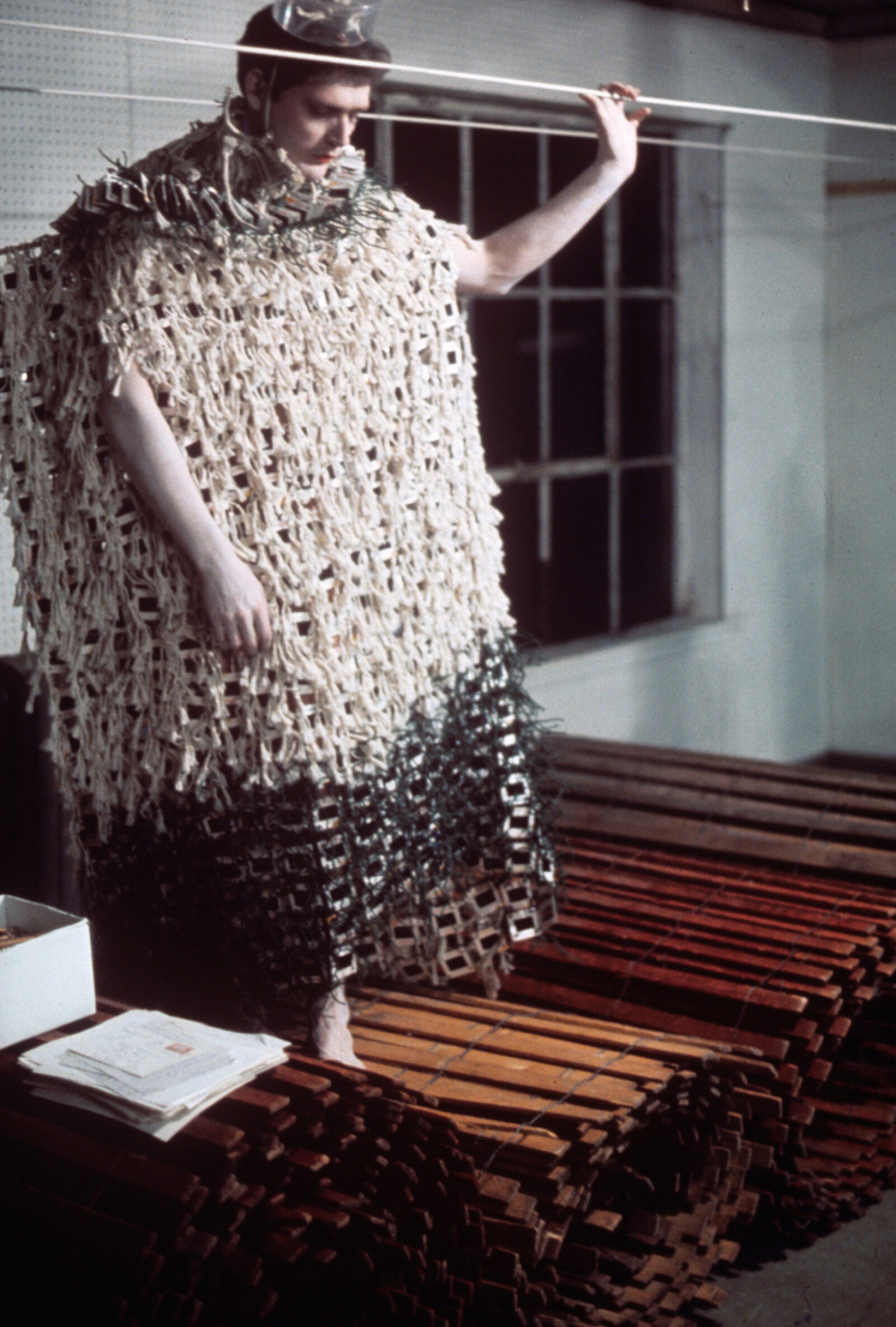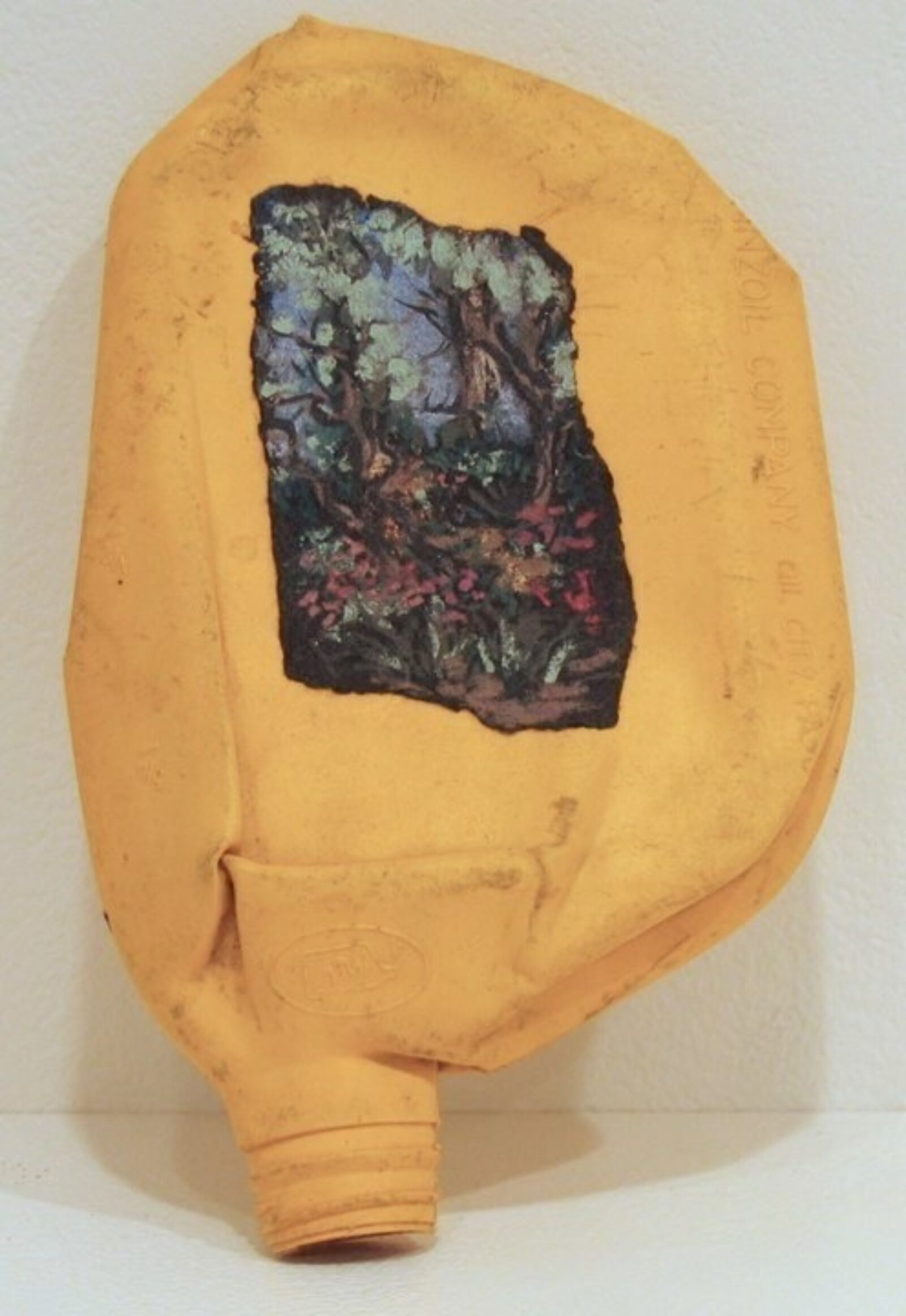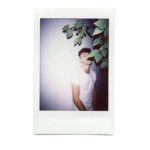



























featured gallery for October 2018
Refuse
Stephen Varble (b. 1946, Kentucky; d. 1984, New York) was an artist who arrived in New York in 1969, becoming known downtown in the 1970s for his outrageous costume sculptures and public performances that disrupted the everyday activities of the art world, the streets, and even banks. His costumes, often created from trash, or stolen and found objects, speak both to the creative realities of a poor artist, but also to the disruptive nature of his ensembles. With milk cartons as breasts that he might pour open, or ties that unleashed breasts full of pennies, his costume sculptures were scrappy, inventive, and mocking of the refined decorum associated with wealthy art world patrons and gallery-goers. In the late 70s and early 80s, concerned that his creative talents were becoming commodified under the realities of the commercial art world, Varble moved away from the medium of public performance toward drawing, xerox, and video. Before completing his epic, operatic video, Journey to the Sun, Varble passed from AIDS-related complications in 1984.
Because much of his work was ephemeral or destroyed after his passing, Varble’s work hasn’t received much attention. Thanks to the research and work of David J. Getsy, however, Varble’s life and work has been revived in two concurrent exhibitions in New York and Kentucky.
Most documentation of Varble’s work in the Visual AIDS registry comes from the early 1970s, when his work was often collaborative. The performances in this gallery, such as his Blind Walk, were created alongside Fluxus artist Geoffrey Hendricks. Two of Varble’s earliest costume works—his Wooden Dress, and Slide Dress—are visible here. The Slide Dress was a costume created with slides from Hendricks’ personal photo archive, initially without Hendricks’s permission. While these early performances played with gender, found objects, and the public, these costume sculptures precede his more outrageous works of the mid-1970s.
This gallery takes inspiration from Varble’s strategy of ‘refuse’—both as a noun and verb. The artists in this gallery either create their work using refuse—trash, or found objects—or create in a way that refuses containment or commodification by the commercial art world. Artists in this gallery echo Varble’s aesthetic strategies, such as disruptive performance, protest, creating objects using trash or found objects, and making work that does not conform to ‘normative’ decorum. These methods often refuse the capitalist, poz-phobic, racist, and transphobic viewpoints of the world we live(d) in.
A number of artists in the registry use gender-play, costume, and performance in public and private settings. John Eric Broaddus created costume performances at the same time as Varble, and even collaborated on Varble’s 1976 Franklin Street loft exhibition. Hunter Reynolds and Maxine Henryson’s I-dea, The Goddess Within, documents Reynold’s drag persona Patina Du Prey confronting gallery-goers and strangers on the street. Curtis Carman’s Two Dog Walk, featuring Flawless Sabrina, plays with representation by mixing ready-made costumes with those created from cardboard. Bizzy Barefoot uses found materials to fashion an otherworldly ensemble in Flora.
Varble’s costumes often combined signs for gender and genital imagery. Ben Cuevas’ Genitosexual (Knit Chakra Series) recalls Varble’s Piggy Bank Dress, a costume which similarly combined overlapping signs of genitals, simultaneously labial and phallic.
Varble’s later costume works often used trash—such as cardboard, egg crates, and soda bottle wrappers—to create dramatic and scandalous looks. This re-use of trash and everyday objects are found in a number of works in the registry, including Robert Reed’s Fag Queen and Barton Lidice Beneš’s Crown, which repurpose materials like a floor fan or paper money to create opulent and campy headpieces. Beneš’s Untitled Museum, Frederick Weston’s Blue in The Face I, and Peggy Frank’s Not A Cocktail Party all use medical waste to create their works, whether through tender collection and assemblage, a blue-faced collage, or the dry humor of a sculpture shaped in a cocktail glass. Both Jerome Caja’s Rhododendron Dell II and Tony Feher’s Just So reuse plastic bottles and transform them into artworks; Caja’s as a canvas for landscape, and Feher’s as a post-minimal assemblage. Wanda Hernandez-Parks’s Q-Tip Wall Design uses multi-purpose materials to create ornamental designs. The underwear of Robert Blanchon’s Stains and the worn soles of Nancer Lemoins’ Woman on Shoe 4 display the ways that soiled or worn garments can be repurposed toward creative, pointed means.
In hopes that his artwork would refuse commercialism, Varble would price his works outrageously high so that no one would purchase them, and his later interest in xerox and video allowed for the potential of cheap reproduction and distribution of his work. Strategies of refusal can be seen in artworks like Chloe Dzubilo’s Untitled (NO NO), which calls out an angry and repetitive ‘NO’ in response to the use of transphobic language. Shan Kelley’s With Curator’s Like These, Who Needs A Cure bitterly points to the incapacity of museums and cultural institutions to fully contain the ongoing realities of HIV/AIDS, despite their attempts to bring visibility to it. Responses to lack of black representation in the Art AIDS America exhibition by the Tacoma Action Collective, and Kia LaBeija’s Your White Walls Can Kiss My Black Ass refused to let a single exhibition dominate a narrative of HIV/AIDS as a mostly white, cis-male concern. Shirlene Cooper’s Women’s Empowerment and Art Therapy Group recognizes the healing potential of art, rather than looking toward its commercial value.
These links of refuse and refusal feel integral to artwork dealing with HIV/AIDS, or to work created by poz artists. As artworks have become, and continue to be, canonized under the revisitation of AIDS-related cultural production, it’s important to look at the ways artworks might contain values that exceed, or extend outside of, the financial. I wonder what Varble would think of his work and life being revisited, effectively contextualizing his work into an art historical canon. While this recognition is vital, as his story and work might otherwise be forgotten, it simultaneously fixes a story of artwork whose intention was to resist fixity, to live a life “not in celluloid, but in rubbish and dreams”. I sometimes imagine that Varble’s ghost will show up to these exhibition openings, take the photographs of himself off of the walls, and sew them into some elaborate, absurd gown—simultaneously destroying and emboldening his place in our memories.
